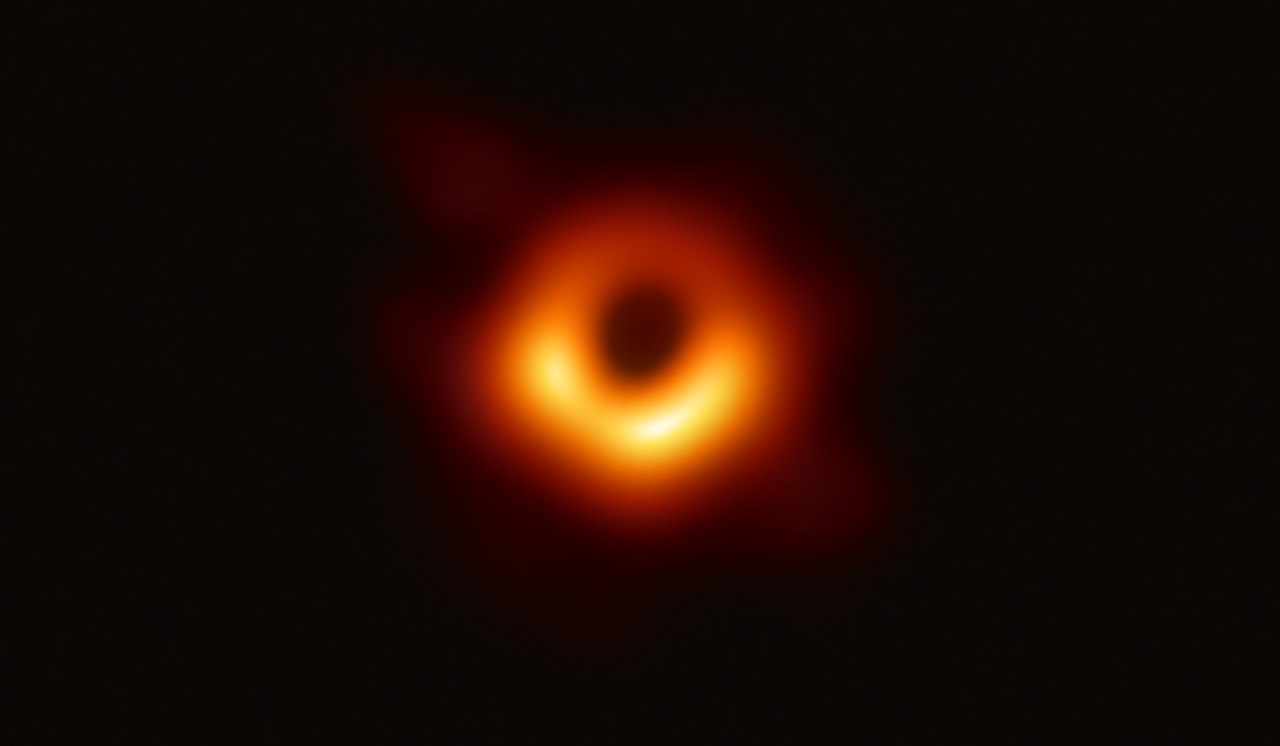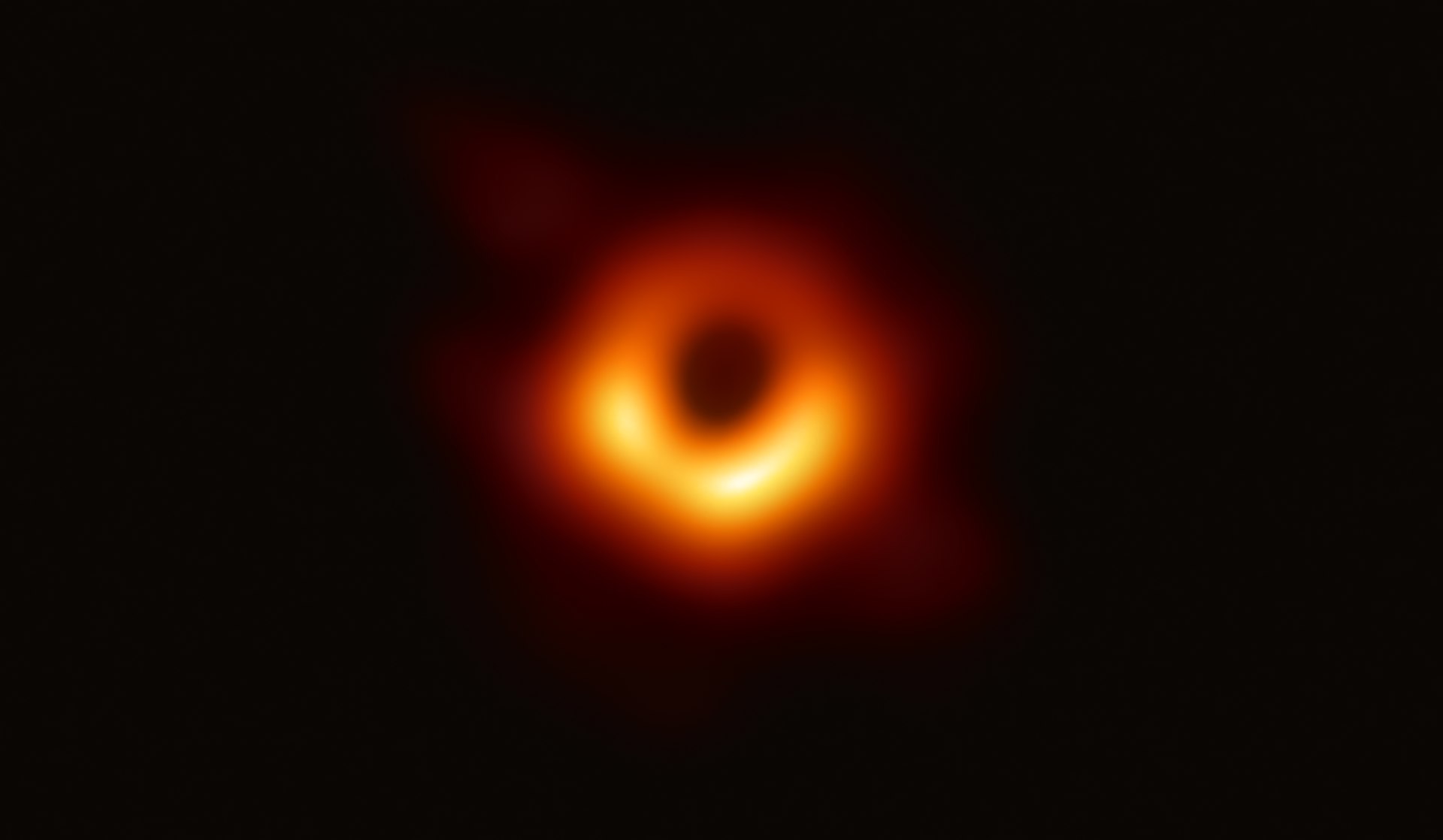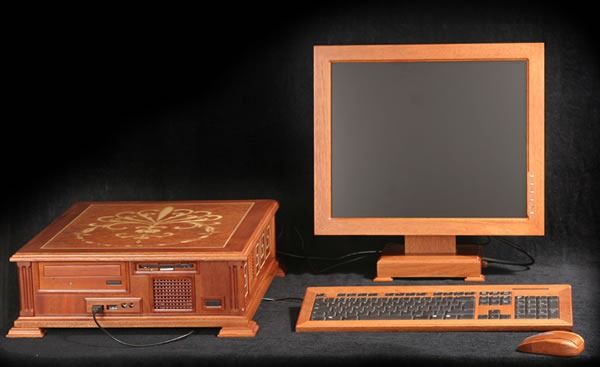The official date of the first-ever image of a black hole is the 10th of April, 2019. Dr Katie Bouman’s algorithm processed the image and brought it to life.
As a result of her work, we can see a supermassive black hole, at the centre of the M87 galaxy.

By Event Horizon Telescope.
Contents
Who Took The First Black Hole Image?
Moreover, this remarkable scientific breakthrough is a result of a 3-year long work by Katie Bouman, an MIT graduate.
The credits for the first black hole image go to:
- joint efforts of MIT’s Computer Science and Artificial Intelligence Laboratory,
- the Harvard-Smithsonian Center for Astrophysics and the
- MIT Haystack Observatory.
Because of this amazing scientific endeavour, the humankind can see the first-ever black hole image.
Can you believe it is 55 million light-years far from Earth? Uniquely, Katie’s algorithm processed the image captured by the Event Horizon Telescope (EHT).

By ESO/O. Furtak.
200 scientists are operating the array of telescopes that took the photo.
Hence, the area covers ground from Chile to Antarctica. Despite Katie’s impressive algorithm, she shares credits with an entire team.
When Was The Image Of The Black Hole Actually Taken?
The official date of the first-ever image of a black hole will be 10th of April 2019.
However, did you know that the first image was actually taken a year before? Ordinarily, the results are being published without any delay.
Nonetheless, the data was being thoroughly analyzed for over a year.
Regardless of its official release date, it is a spectacular achievement!
Katie Bouman – Woman Scientist Who Built The Algorithm
Katie is a remarkable academic, holding a bachelor’s degree in science from the University of Michigan. Besides that, she carries an MIT master of science degree.
Dr Katie Bouman works as an assistant professor of computing and mathematical sciences at CALTECH.
As a result of her achievements, Katie deserved a place in history. Katie Bouman is the first scientist who captured an image of the black hole.
Similarly, in light of her achievements, people are comparing Katie Bouman with Margaret Hamilton, the first woman scientist who programmed the Apollo guidance software.
Black Holes and Astronomy
Astronomy has been a science that has been around for thousands of years. One would have to be very specific on the part of the planet or star in order to determine the distance to its centre. However, this is not the case with black holes.
What is a Black Hole?
A black hole is like an endless pit which revolves around a central star which is the core of the black hole. Astronomers have tried many times to predict the movements of these gravity waves, and the position of the planet and star but none of their predictions were ever correct.
The only way they could find out the gravitational wave was made was when the Earth came into contact with the gravity wave. On its way, they detected another gravitational wave which they were able to pick up easily.
If we take a closer look at the planetary system, we can observe the gravitational waves from the action of the planet against the planet on its way.
Black Hole and Gravitational Waves
A black hole itself is believed to have an area of smaller dimension. When it comes to the gravitational waves, it is known that there are regions of a size where a black hole is rotating in its own area.
It is also known that during the time when the gravitational waves were produced, the planet was moving through the gap in the distance thus giving rise to the gravitational waves which were then recorded.
As mentioned earlier, a black hole is more of a singularity which may also exist in the centre of a white dwarf. These singularities in black holes will be able to provide radiation in different wavelengths as it is spinning and turning to make it rotate. This radiated light may then be caught by the eyes of an astronomer through the telescope.
If you would like to learn more about this matter, you must check out the ligo.caltech.edu for more information on gravitational waves and how they are observed. You may also visit the websites of NASA and the European Space Agency. They may help you learn more about the subject and answer all your questions.
Of course, you would also need to be prepared because there is the possibility of encountering solar flares. A solar flare can occur anywhere on the solar system’s orbit and this can cause Earth to have disruption which is incredibly dangerous.
Therefore, you should be well-informed on how to cope with these things as well as how to observe the black hole through the telescope. Keep in mind that the information provided here may be helpful but it is still up to you to take a closer look at this subject.
When you know the whole thing well, you can say that you can confidently take part in astronomy and study the galaxy.
Are you looking for more information on who was the first ever?




